source:China Daily Global editor:Zhang Wenni
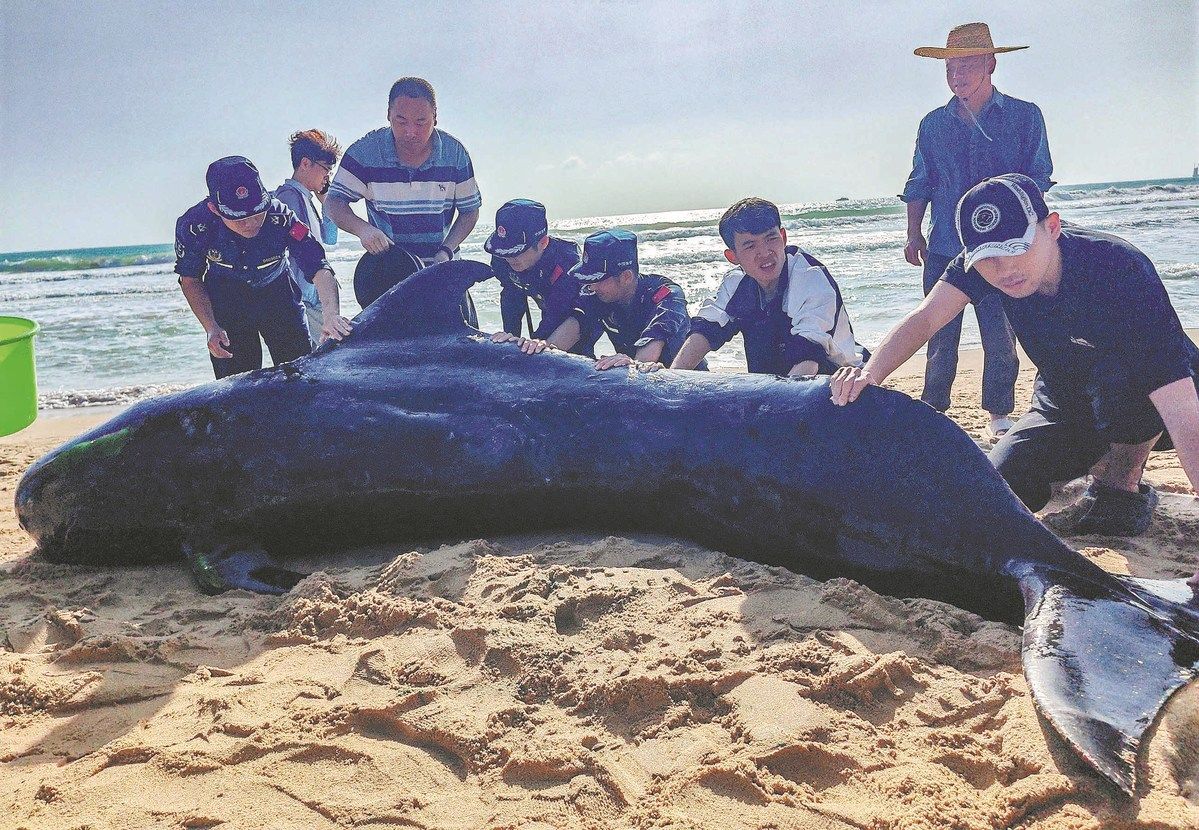 Volunteers and conservationists help a short-finned pilot whale stranded in Haitang Bay in Sanya, Hainan province, on Jan 3. WANG CHENGLONG/FOR CHINA DAILY
Volunteers and conservationists help a short-finned pilot whale stranded in Haitang Bay in Sanya, Hainan province, on Jan 3. WANG CHENGLONG/FOR CHINA DAILY
In the nation's first instance, a short-finned pilot whale was released into its natural habitat, thanks to the dedicated efforts of more than 200 people who joined hands to save the stranded creature.
The whale has spent 145 days in an oceanic park before it was released into the ocean where it belongs.
It all began on Jan 3, when the whale was spotted stranded on the sandy shores of Haitang Bay in Sanya, Hainan province, sustaining unclear injuries. Marine police, conservationists and volunteers rushed to the scene, and managed to send the whale to the Sanya Haichang Animal Conservation Center.

An animal keeper plays with Haitang the pilot whale in Sanya Haichang Animal Conservation Center on Jan 21. WANG CHENGLONG/FOR CHINA DAILY
They named it Haitang, after the Haitang Bay where it was found. Haitang, meaning the plant begonia, also coincides with the popular animated movie Big Fish and Begonia.
Initially, Haitang faced the risk of flipping over and drowning, due to lung infection. Some 100 volunteers took shifts to hold the whale all day long so that it wouldn't suddenly flip over.
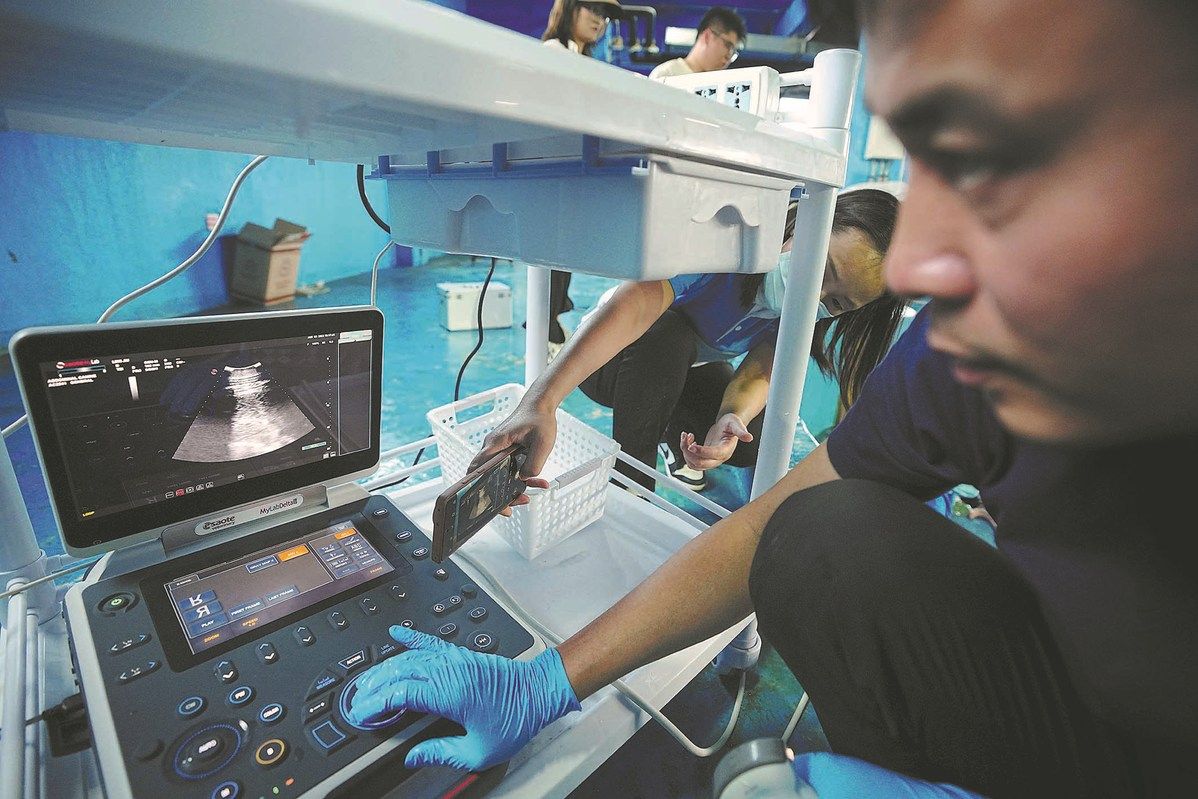 Using an ultrasound machine, conservationists check if there are any internal injuries or diseases in Haitang's body at the conservation center in January. WANG CHENGLONG/FOR CHINA DAILY
Using an ultrasound machine, conservationists check if there are any internal injuries or diseases in Haitang's body at the conservation center in January. WANG CHENGLONG/FOR CHINA DAILY
As it gradually recovered, the conservation center moved it to an outdoor pool for a larger space later that month. Months later, its body length and chest circumference both increased by some 10 centimeters, by consuming some 12 kilograms of squid and 2 kg of herring every day.
In early May, experts believed that Haitang was ready to return to Mother Nature. On May 25, the Liyang 258 science research ship took it to a designated area. In the early morning of the following day, Haitang was released back into the ocean.
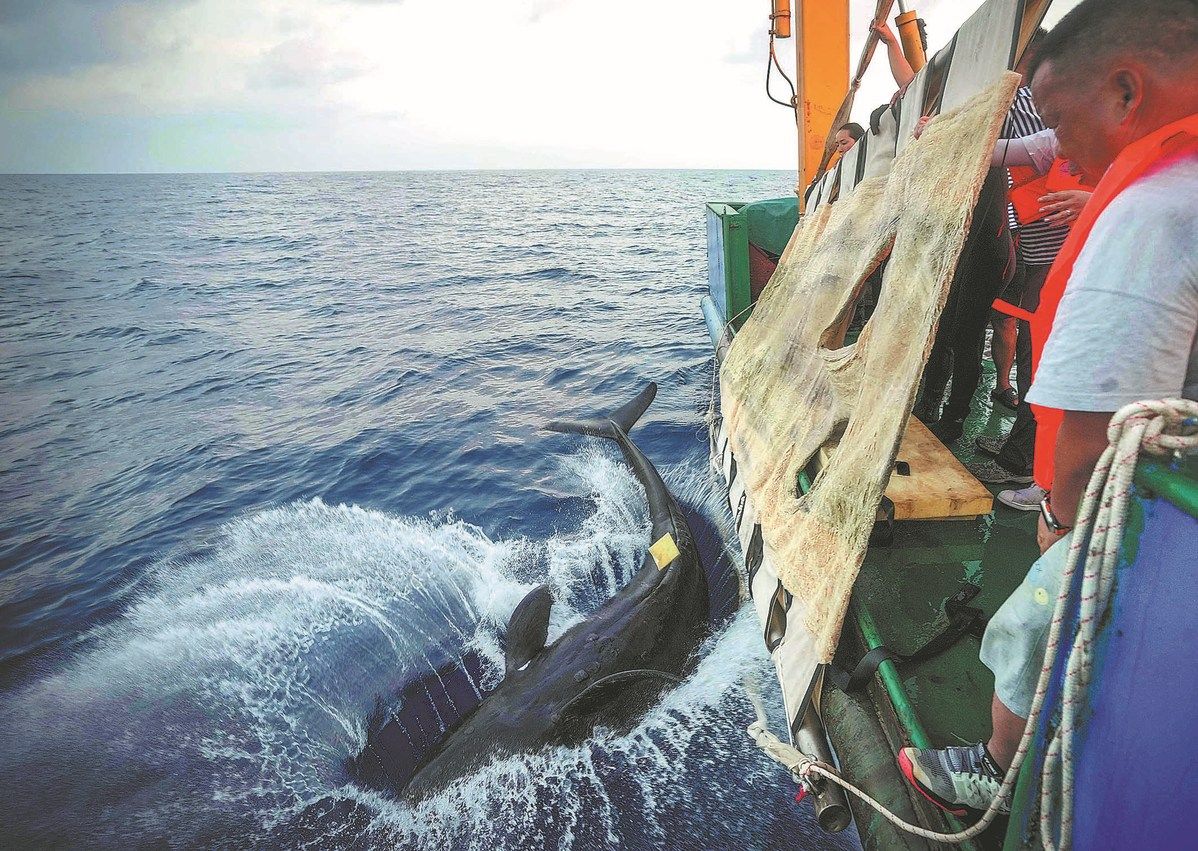 Haitang is released back to the ocean on May 26. WANG CHENGLONG/FOR CHINA DAILY
Haitang is released back to the ocean on May 26. WANG CHENGLONG/FOR CHINA DAILY
In a follow-up monitoring some 40 days later, using trackers and beacons placed on Haitang before its release, scientists found that it had dived to some 300 to 500 meters below the surface — the favored depth for it to feed.
Despite being unable to see it once again, scientists believed that it had found its group and living in the area healthily.
Short-finned pilot whales are nationally second-class protected wild animals in China.
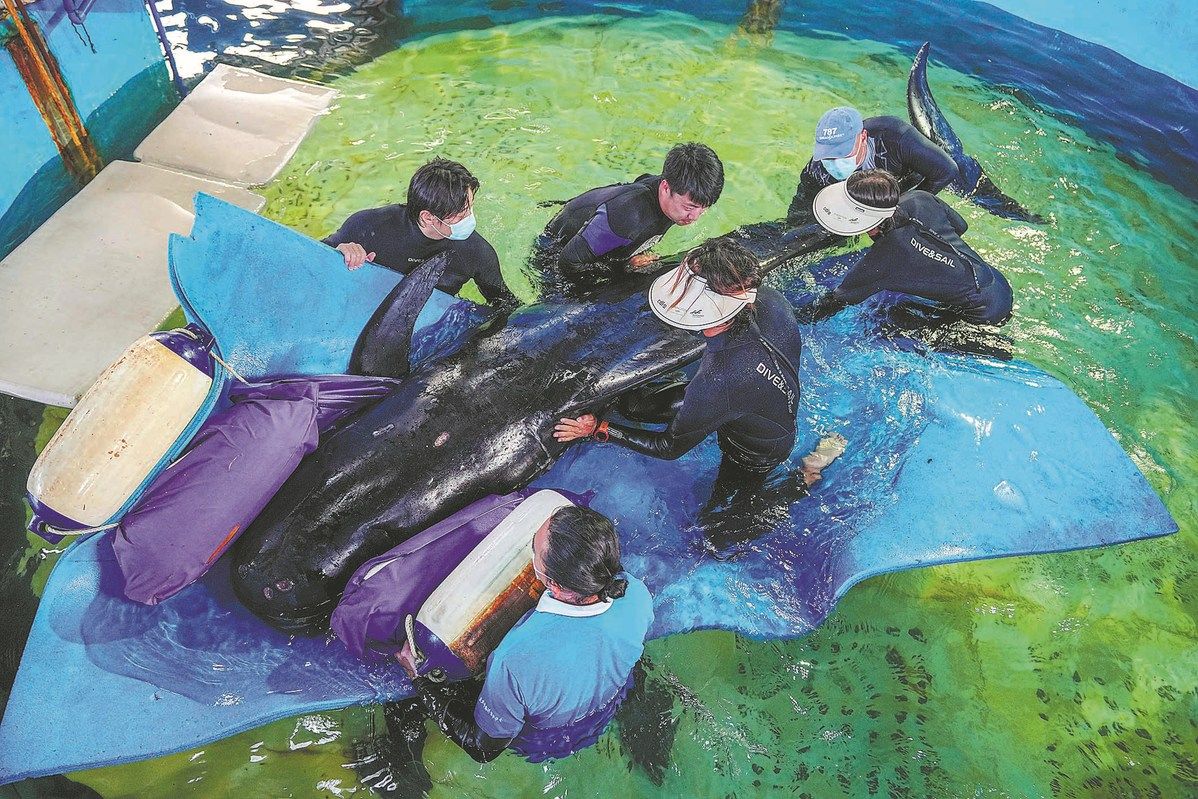 Volunteers keep Haitang balanced and afloat as it was very fragile. WANG CHENGLONG/FOR CHINA DAILY
Volunteers keep Haitang balanced and afloat as it was very fragile. WANG CHENGLONG/FOR CHINA DAILY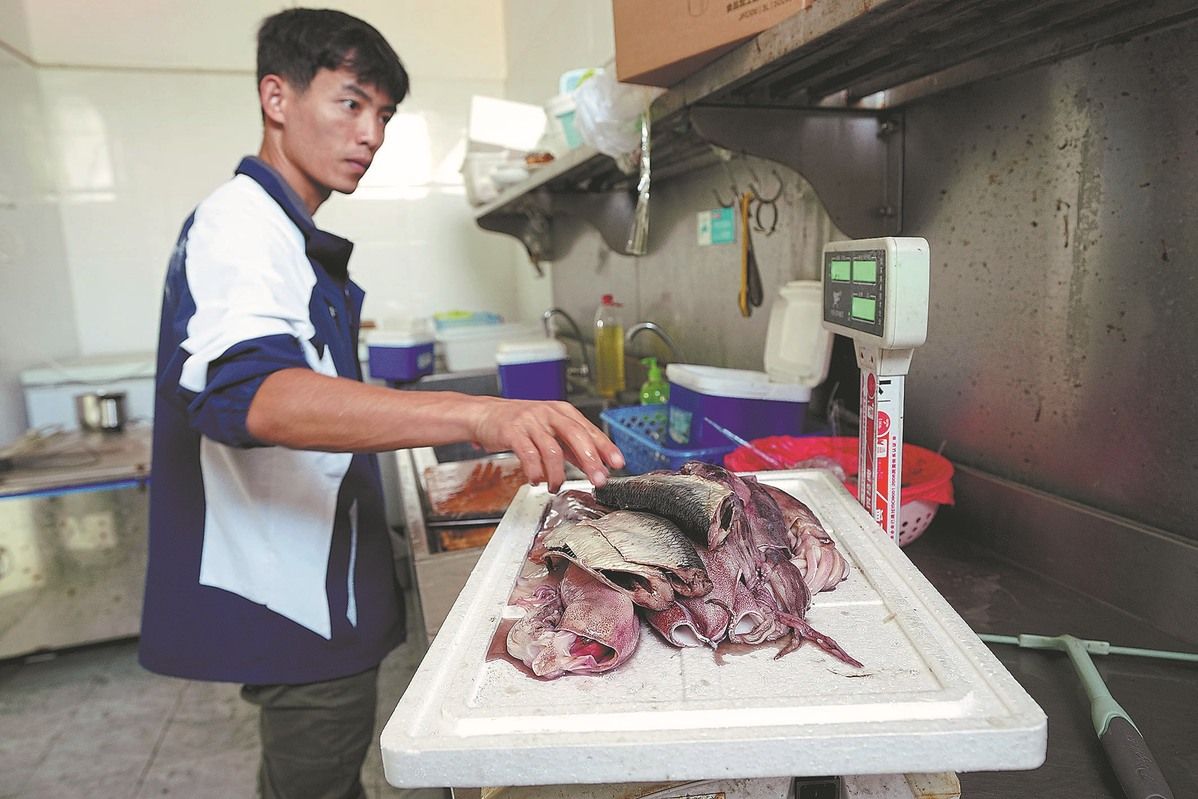 Food is prepared for Haitang. WANG CHENGLONG/FOR CHINA DAILY
Food is prepared for Haitang. WANG CHENGLONG/FOR CHINA DAILY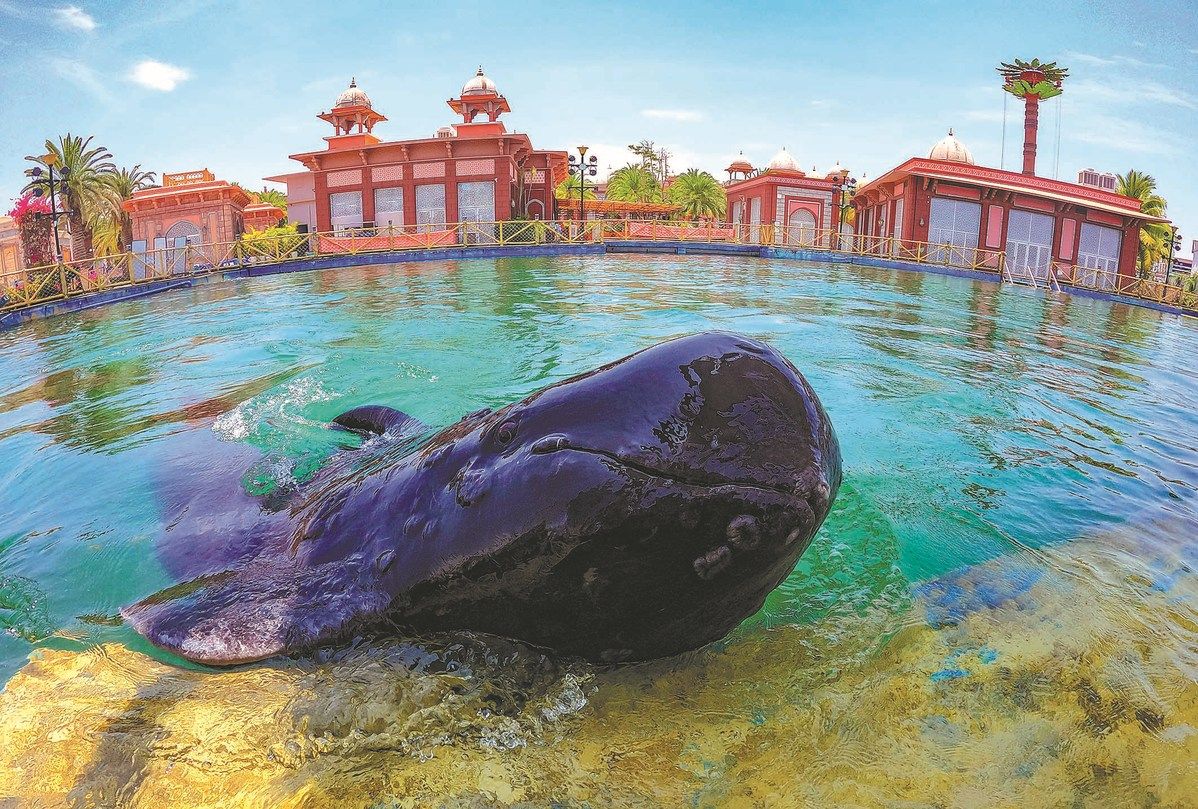 Haitang jumps out of its outdoor pool to see if food has been brought there in May. WANG CHENGLONG/FOR CHINA DAILY
Haitang jumps out of its outdoor pool to see if food has been brought there in May. WANG CHENGLONG/FOR CHINA DAILY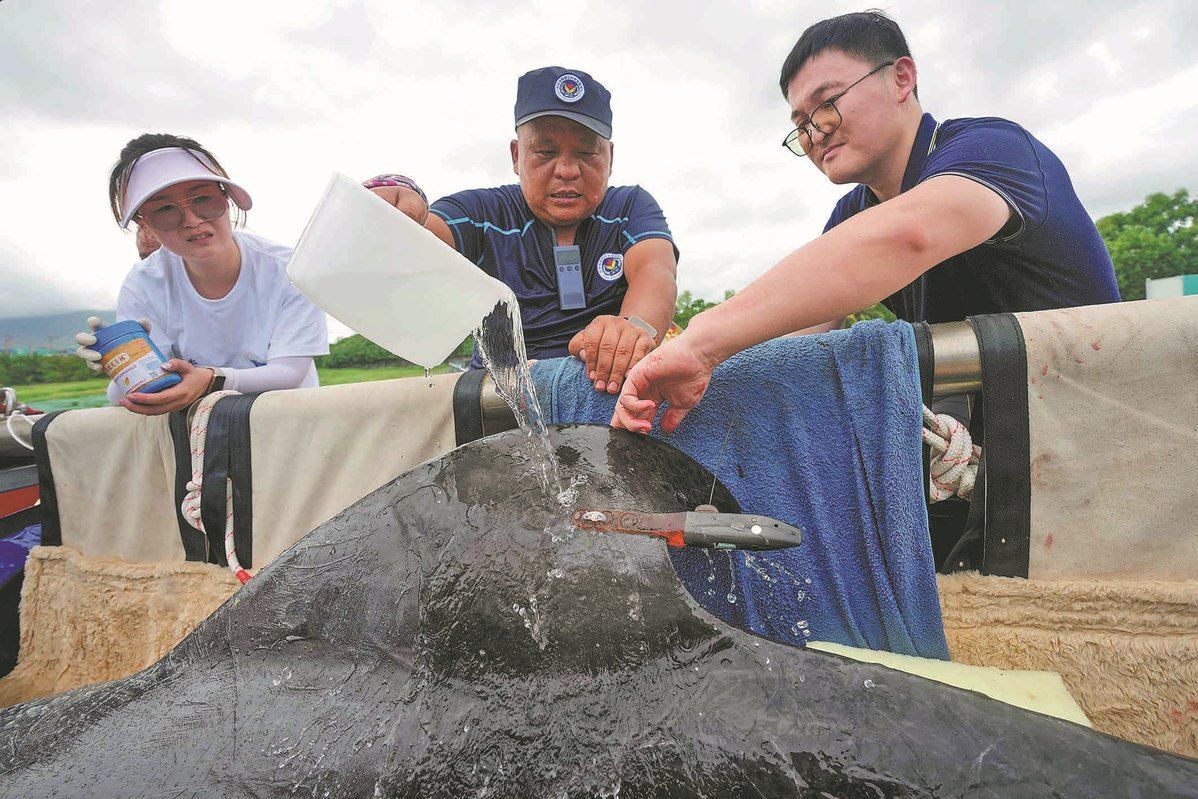
A position tracker is placed onto Haitang before its release. WANG CHENGLONG/FOR CHINA DAILY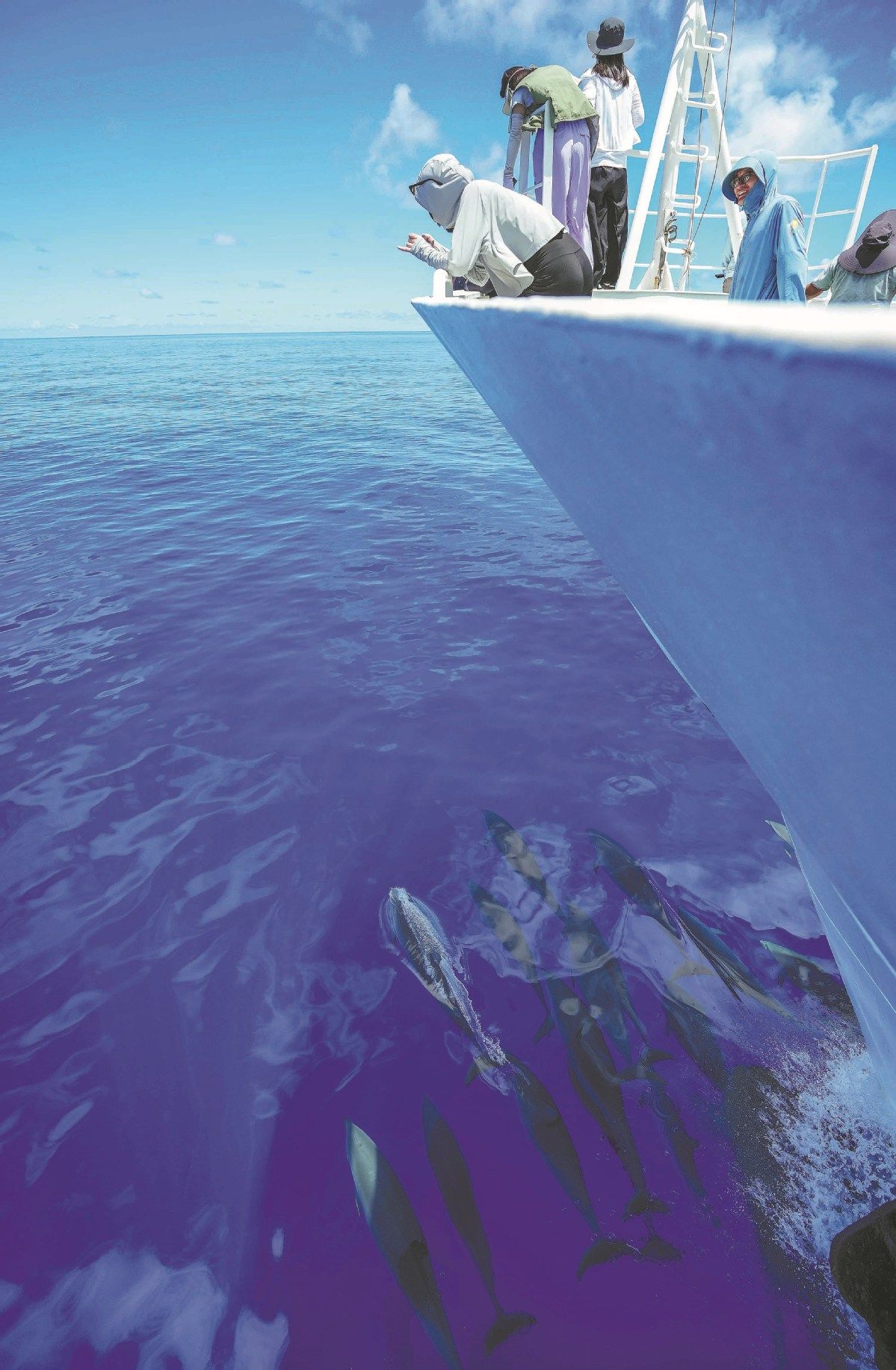 Researchers look for pilot whale groups during a follow-up monitoring, as dolphins swim under their boat on July 6. WANG CHENGLONG/FOR CHINA DAILY
Researchers look for pilot whale groups during a follow-up monitoring, as dolphins swim under their boat on July 6. WANG CHENGLONG/FOR CHINA DAILY